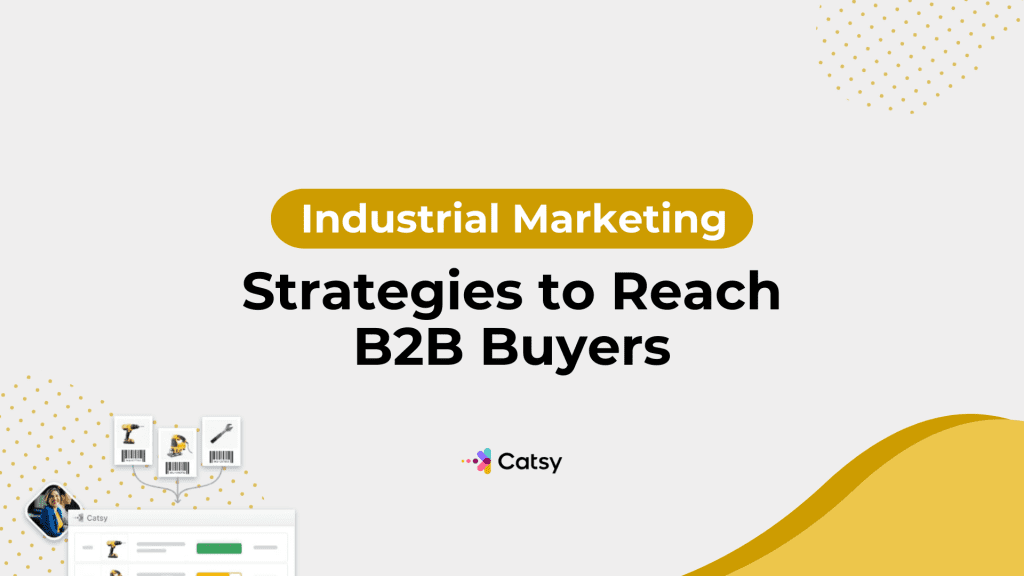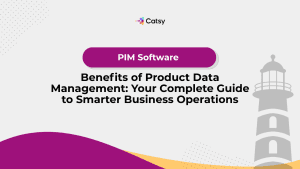Industrial Marketing Strategies to Reach B2B Buyers
Today’s industrial buyers are more informed, more independent, and more demanding. They expect technical accuracy, instant access to information, and content that speaks their language.
This article explores how industrial marketing must evolve to educate, build trust, and deliver real solutions that match the way modern B2B buyers research and decide.

Industrial Marketing Strategies to Reach B2B Buyers
Business processes have evolved. Technology has transformed how people research and buy. Today’s buyers are more informed and more demanding. They carefully evaluate options, compare specs, and make data-driven decisions. This shift has impacted every industry, including the industrial sector.
Industrial buyers are now more self-directed than ever. They expect technical answers right away, without needing to talk to sales. They want seamless digital experiences across every touchpoint. Most importantly, they look for partners they can trust.
As a result, sales strategies must adapt. Traditional marketing, based on slogans or surface-level messages, is no longer enough. Modern industrial buyers want content that educates and informs. They expect messaging that speaks their technical language. And they value solutions that solve real operational challenges.
In this Article
What’s Industrial Marketing
Industrial marketing is a type of B2B (business-to-business) marketing geared towards industries like manufacturing, oil & gas, etc where businesses sell products or services to other companies instead of individual consumers.
The goal of industrial marketing is to increase service recognition. By doing so, companies can reach more potential business customers.
Being sector-specific influences how products are promoted. Unlike B2C (business-to-customer), B2B efforts must address the needs of other businesses. These needs often focus on operations, efficiency, and regulatory compliance.
Understanding Industrial B2B Buyers
Sales interactions with a person are different from interactions with an individual customer.
In traditional B2C marketing, emotions often influence purchasing decisions. Consumers usually buy based on how a product makes them feel. They also consider the personal satisfaction they expect to receive from the purchase.
However, it’s different in industrial marketing. B2B buyers seek precision, certifications, and support. Companies focus on creating long-term relationships. They focus on solving business challenges through tailored, technical solutions.
In B2B sales, the decision-making process takes a long time. It often involves multiple stakeholders. Decisions are based on technical specifications, compliance requirements, and return on investment. It’s a complex process. That’s why it’s essential to build trust on every stage. It’s also relevant to provide educational content that supports informed decisions.
Both B2B and B2C are based on the same principles. However, the main differences lie in their target audiences and approaches. That’s why the B2B focus has to be different from the beginning.
Content must be more technical. The value proposition is clearer. The purchasing process is consultative.
Instead of focusing on emotional benefits, industrial marketing should highlight product compatibility. The challenge in industrial marketing goes beyond getting attention. You also need to show expertise and reliability. Buyers want to know you understand their industry and specific needs. Ultimately, you’re offering a solution that affects their efficiency and operational continuity.
That’s why trust and credibility are just as important as the product itself.
Make Catsy DAM and PIM Software an Extension of Your Team
Book a Free DemoHow B2B Buyers Research & Evaluate Products
Industrial buyers do not make impulsive decisions. Quite the opposite. The purchasing process begins long before contacting your brand.
First, they research the product they need. They compare specifications, download technical sheets, read documentation, and validate that the product complies with regulations.
Buyers expect to find all relevant information from the first contact with your brand. This applies to your website, distributor portal, or a marketplace like Grainger. If they don’t find it, they’re likely to move on to the next supplier.
To capture their attention, your product sheets must be complete and well-structured. Each one should be adapted to the specific channel where it appears. Buyers need quick answers, reliable data, and the ability to validate for themselves if the product fits their needs.
What Industrial B2B Buyers Expect from Suppliers
In B2B, buyers look for a reliable, clear, and technically competent supplier.
- Technical transparency: Technical transparency builds trust with industrial buyers. They need dimensions, materials, tolerances, and compliance certifications.
- Consistency: Users expect consistent information across all channels. No errors or differences.
- Clear documentation: Clear documentation is crucial for industrial buyers. They expect access to PDF spec sheets, manuals, and safety data sheets. Technical diagrams and CADs should also be available without friction.
- Reliable support: Buyers expect easy access to representatives. Quick response times and solid post-sale.
The research and selection process should be simple. To make that possible, we need to see the experience from the buyer’s perspective.
Industrial Marketing Strategies to Reach B2B Buyers
1.- Technical Optimization of Product Content: Products marketed in the industrial sector are technically more complex. B2B buyers have a deep knowledge of each product they need. Therefore, providing technical and accurate content is fundamental in the marketing strategy.
- Through your sales channels, you should provide all the information you have about your products (dimensions, materials, tolerances, compatibility, standards).
- Have downloadable documents such as installation manuals, technical sheets, or even safety data sheets.
- Use technical language, with a lexicon adapted to engineers, buyers, and interested parties.
- Provide case studies focused on specific technical challenges. They should include measurable outcomes, technical specifications, and implementation details.
2.- Search Optimization for Technical Buyers: B2B behavior works differently from B2C. Industrial buyers aren’t looking for generic terms. They search for exact specs, compatibility, and compliance standards. Your SEO strategy must be much more technical than in B2C marketing. It should reflect how your audience thinks.
Some techniques you can apply are:
- Long Specs Targeting: When buyers search for a product like yours on the internet, they will be very specific. Eventually, they’ll click on the option that better reflects their search.
For example, your client may be looking for “Stainless steel ¼” NPT check valve for compressed air systems.” If your product has a specific name, mentioning its categories and technical specifications, there’s a 2.4x higher conversion intent. To achieve this level of conversion, extract key product specs and turn them into structured content. - Application-Based Keywords: Users might search for the specific problem they have. For example, “Explosion-proof LED lights for spray booths.” To be visible to them, create content that connects your products with the problems they solve, such as blog posts or category pages.
- Standards, Ratings, and Certifications: B2B buyers sometimes search for compliance-related keywords. Terms like “ISO 9001, ANSI Z87.1, ASME B16.5” are common in technical searches. Include your product’s full name and abbreviation of standards to boost visibility and authority. Add certifications directly into product titles, bullets, downloadable spec sheets, and filtered attributes.
In technical SEO, we focus on intent and precision.
If your business has hundreds of products, manually adding each specification becomes complex. It could lead to errors and inconsistencies. Product Information Management (PIM) systems were developed to help businesses solve this problem.
PIMs are centralized platforms where you can store, manage, and distribute information.
One of these platforms is the Catsy PIM system. It allows you to store all your product’s information (descriptions, prices, variations, images, videos, and documents).
From the PIM, you can distribute the information automatically across all your sales channels. This significantly reduces the time your team spends updating each product’s information. Moreover, it eliminates errors and inconsistencies.
3.- Engineering-Focused Social Media Strategy: Social media channels are an opportunity window for any niche. This includes the industrial sector too. However, the approach is different from B2C or even other B2B. Technical communities gather on specific platforms and engage with specialized content formats.
- LinkedIn Technical Groups: Engineering-focused content performs well in specialized LinkedIn groups. It can generate up to 7.3× higher engagement than general business page posts. In these groups, people comment on their cases and discuss related topics. Therefore, it’s a great opportunity to participate and propose your product as a solution. Instead of promoting your products directly, focus on adding value to the discussion. Try sharing use-cases, answering questions, and explaining how your solution solved a similar challenge.
- YouTube Technical Tutorials: On YouTube, you can find tutorials for any field. In the industrial sector, it’s particularly useful. Videos where products are used to solve a problem generate more trust and conversion than promotional product videos. This is a great opportunity to generate value and connect with the community. By creating tutorials, you show your product as a solution to a problem. Moreover, you provide valuable information to buyers to make more informed decisions. Consider creating educational, application-based videos, focusing on common challenges your product can solve.
- Technical Webinar Series: Many B2B brands implement webinar programs focused on standards, compliance updates, or tech applications. This content increases brand engagement by up to 67%. Consider conducting a webinar every quarter on specific verticals, where your internal experts share their expertise on related topics. By doing this, you generate authority and build trust. Remember to promote your webinars through your social media channels and encourage industry people to participate
4.- Content Marketing: Educational content is a powerful tool in industrial marketing. Just like YouTube tutorials guide users through complex technical decisions, your content can do the same. By guiding buyers through technical topics, you position your company as a trusted expert.
- Product selection guides: Creating detailed articles allows buyers to make more informed decisions. For example: “How to choose the correct pneumatic actuator according to load type and operating pressure.”
- Technical comparisons between materials or technology: In the engineering field, comparative content is highly valuable. For example, “Stainless steel vs. aluminum in corrosive environments.”
- Operational case studies: Showing how your products helped improve efficiency, reduce installation times, or meet regulations in similar companies generates trust, credibility, and brand preference.
Consider including downloadable formats that users can constantly use. This is a way to generate lead magnets.
5.- Technical Events and Demonstrations—Virtual and Physical: Potential buyers want to see items in action. Hosting live or recorded demonstrations can help bridge that gap. Consider creating virtual webinars, an in-person trade show, or an on-site walkthrough. These demonstrations facilitate conversations with buyers. Doubts are resolved, products are tested, and human connections are created. Consider recording a walkthrough of a new product installation or hosting a short session explaining the difference between two material types. Use that content across sales meetings, your website, and social platforms.
Analyze And Iterate
Analysis is fundamental in a marketing strategy. After executing a campaign, it’s important to measure what worked. With this information, we can iterate or modify.
Sales cycles in B2B are long and involve many people. Therefore, it’s key to understand what’s working and why.
Some of the most relevant metrics for industrial marketing include:
- Organic traffic to technical pages or product sheets.
- Time on page and bounce rate on technical content.
- Engagement with downloadable documents (technical sheets, manuals, CADs).
- Conversions attributable to content or SEO campaigns.
- Results from webinars, demonstrations, or technical events (attendance, leads, follow-up).
It’s important to do a qualitative analysis. What type of technical content generates more interest? At what stage of the process do buyers abandon? What doubts are repeated in webinars or commercial meetings?
Adjust your strategies. Create more relevant content. Delve into the topics your technical audience values.
Remove what doesn’t add value.
B2B buyers are looking for reliability, precision, and expertise. Measuring the performance of your technical content helps you speak the same language as your buyers. That’s how you open the door to real opportunities.
In industrial marketing, you need to be useful at every stage of the buying process. Users are looking for a partner who can help them solve problems. When you understand the priorities of an industrial buyer, you can create marketing that aligns with their expectations. That’s how you position yourself as a strategic partner.
Want more tips, tutorials, and insights on product content and e-commerce operations?
Stay connected. We post regularly to help brands like yours scale smarter.
Are You Ready To streamline your product content management?

Frequently Asked Questions
They include technical specifications, product descriptions, pricing, categorization data, product codes, product relationships (kits, accessories, etc.), regulatory/compliance data, product marketing content, rich media assets like images, videos, and 3D models, product documentation like manuals, and digital product renditions for e-commerce. Having a single source of truth for all this data prevents issues when distributing it to partners.
Inaccurate or incomplete product data flowing to distributors frequently leads to negative customer experiences in a few key ways: orders getting fulfilled with the wrong products, delays on orders, components missing from product bundles, sales staff’s inability to correctly market features, and customer returns and refunds due to products not matching expectations set by the product data. Customers get frustrated when their orders don’t match what was represented.
Industrial products are inherently complex, and the number of technical attributes that need to be accurately detailed is exponentially greater. There are complex specifications, product configurations, compatibility data, industrial certifications, product documentation, and more to account for. Any misstep in data accuracy could violate safety regulations or cause products to be unusable for their intended purposes. The room for error is far less.
Complete and accurate product data is essential for distributors to forecast demand correctly and set stocking levels to avoid stockouts or overstocks. They rely on data like product descriptions, pricing, product bundling details, and other marketing data to gauge customer demand. If crucial data elements are missing or wrong, it can completely throw off their sales projections and inventory planning. This leads to carrying costs or lost sales from not having the right products available.
A PIM centralizes and validates the core product details like technical specifications, descriptions, categories, etc. DAM software does the same for product-related media like photos, videos, documents, etc. When integrated, users can quickly map assets to corresponding product details in PIM to create enriched product experiences. This high-quality product data can be distributed to sales and marketing channels like distributor portals. The tight integration ensures consistent, high-quality product data and assets.
Subscribe For More Content
Sign up for monthly tips on how to drive revenue with product content.




